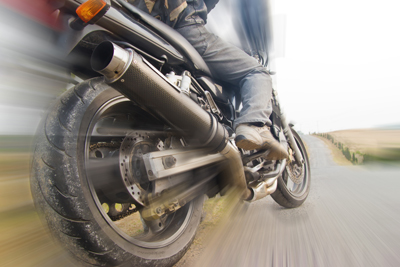
|
I don’t know what’s on your Facebook feed these days—or if many people actually have Facebook anymore, and not some other social media platform. But still, I’m getting a lot of what we used to call “blooper reels.” Maybe because I pause to watch them—there doesn’t seem to be any clicking involved—that the media gods decide to send me more of these. And there doesn’t seem to be any advertising, just a series of twenty or thirty of these three- to five-second clips, obviously gathered from home videos and smartphone cameras, rather than staged. A counter always clicks down to tell you how many more of them you get to—or have to—watch.
These clips are supposed to be hilarious, but most of them are just brutal. Someone is walking alongside a swimming pool at a party, missteps, and falls in—but it’s not a clean fall, and they usually smack their knee or their head on the pool’s coping. Ouch! Or some kid is skateboarding and decides to jump on a stairway’s center railing and ride down on the flat of his board—but instead he tumbles and lands on his neck. Ouch—and maybe a couple of fractured vertebrae! Or someone is swinging from a rope in a tree over the bank of a river or a lake—but he or she lets go too soon and slides face-first in the dirt before plowing into the water. Double-ouch—with a mouthful of gravel.
Being an empathetic sort, I feel an electric jolt go through my body with each of these impacts. I know the person is getting a serious injury—or at least I would if this were happening to me. The sensible thing would be to scroll on before the mayhem starts, but I just can’t look away. Maybe that’s the masochist in me. (I don’t think I’m a sadist, taking delight in these peoples’ pains. And I don’t find these bloopers at all funny. But they are … hypnotic.)
Some of these blooper reels involve motorcycles, too, where a person who is unmindful—or perhaps never learned to ride in the first place—does something stupid. He or she gives the throttle too much twist starting out, or tries to do a wheelie, or has a friend jump on the back while the machine is moving. And predictably, the bike upends or wobbles around and then falls over.
And finally, there is a variant of the blooper reel showing traffic accidents, apparently derived from dash cams. Cars swerving in front of the driver, trailers come unhitched, motorcycles get side-swiped or rear-ended. And in some cases, a car or truck up ahead has stalled on railroad tracks after the gates go down, a train barrels through, and the car is destroyed. These things are almost a repeat of the “death on the highway” films they used to show—maybe still do—in driver’s ed class.
Why do I mention all this? Because I recently sold off my motorcycles and have occasionally thought about buying another one. And seeing a sudden influx of these blooper videos with real pain in them as well as unpredictable highway crashes is having a subliminal effect. Maybe the social media gods are pointing the middle finger at me. Maybe nobody else is seeing these things and reacting. Or maybe it’s a campaign to teach us fear—or, if you find yourself laughing at these bone-crunching exercises, to make us callous and cruel.
The thing that resonates with me, especially in the automotive clips, is that the visual experience is eroding my personal confidence.

|
To be able to move through your day, you must be able to forget—or at least not dwell on—the possibility of falling and breaking your neck, or stepping into the street and getting sideswiped by a car, or reaching for something on a shelf and having it collapse in your face. You need to believe that you are competent, balanced, centered, and in control. If you think about all the possibilities for death and disaster all the time, you will be frozen with fear.1
To ride a motorcycle, you must have a certain belief in your own mastery and, yes, your invulnerability. We used to call it extending your chi, your spiritual force, around yourself and the bike. You must think ahead, maintain your margins, keep your eyes on a swivel, and believe that you have the roll-on speed and swerve-avoidance, if not the braking distance, to stay out of trouble. You must adopt the mindset of the “immortal motorcyclist,” or you would never get out there and play among the cars and trucks.
But then there come these blooper reels and highway crash videos. Falling off the bike hurts, just like landing on your neck in a skateboard accident. Falling off at speed scrapes you up and then gives you blunt-force trauma as you come to a stop against a guard rail, bridge abutment, or the bumper of the car ahead. These images are a reminder to me that riding a motorcycle is being a ballistic object held in the saddle only by the force of gravity. And a fiberglass and styrofoam-padded helmet, a leather jacket with neoprene-armor inserts, sturdy jeans, and steel-reinforced boots are not going to be much protection except in the slowest, most dainty of falls.
If the Facebook gods are pointing the finger at me, I am certainly getting their messages of fear. Or maybe I’m just starting to notice them.
1. And this, of course, is a metaphor for life. Every action you take does invite risk. On top of that, we still live under a variable star in a dangerous cosmic neighborhood. And then, whatever you do, sooner or later you will die. Live a perfect life, utterly safe, avoiding all risks, and your organs and connective tissues will eventually clog up and break down anyway. This marvelous meat-covered skeleton made of stardust that you’ve been driving all along is not immortal. And the possibility exists—coming to you sometimes in the middle of the night—that the you who’s driving it might not survive the meat machine’s ultimate collapse. Maybe after life … there is no life.

